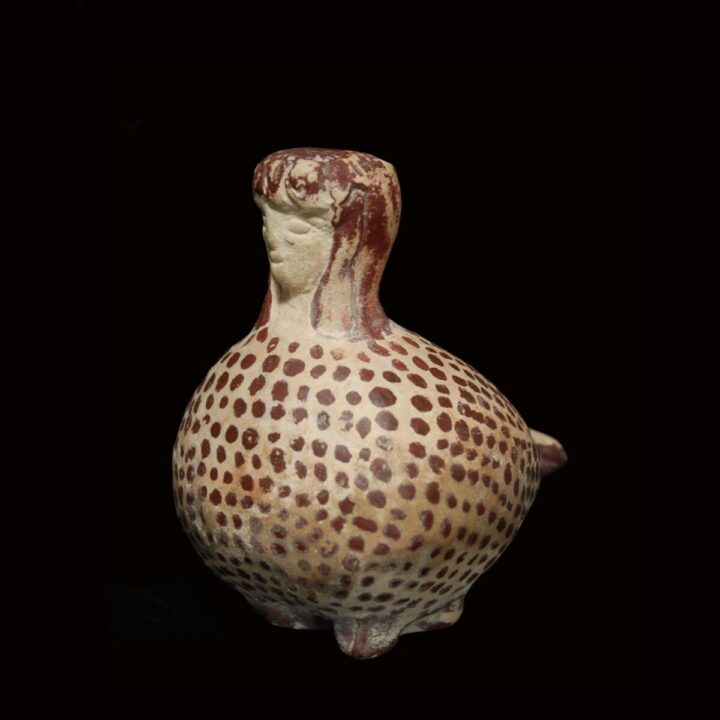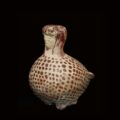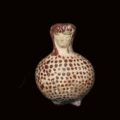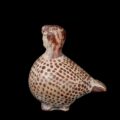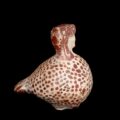Etrusco-Corinthian Terracotta Figure of a Siren
Culture: Etruscan
Period: 6th century B.C.
Material: Terracotta
Dimensions: 9.4 cm high; 9 cm long
Price: Sold
Ref: 4234
Provenance: From the Swiss private collection Baron O. C. V. L. (1937-2022).
Condition: Intact with beautifully preserved painting.
Description: Solid terracotta statuette of a siren with a woman’s head and the body of a bird. The moulded face is framed by red-brown forelocks and long strands on the sides of the same colour. The body is spherical and adorned with red-brown dotted decoration. At the back the body ends in horizontal tail feathers decorated with stripes. The figure stands on slightly set off legs. Sirens, who enchanted, lured, and ultimately killed sailors with their singing, appear in Greek mythology from around 800 BC and in depictions around 650 BC. Corinthian figurative vases in form of sirens with dotted bodies and set off feet are dated from 600 B.C. They often served as vases in tombs and were exported into the entire Greek world. In Etruria, the theme was taken up and the Corinthian models were imitated. However, the figures did not only serve as vases, but were also moulded from solid clay, such as the present statuette. They had either an apotropaic function in the tomb or were placed as a votive offering in a temple. See for the sirens from Corinth: Wiliam R. Biers “Plastic Sirens from Corinth; An Addendum to Amyx”. In: Hesperia: The Journal of the American School of Classical Studies at Athens, vol. 68, no. 1, 1999, p. 135-146. Similarly decorated sirens see in the Boston Museum of Fine Arts with the inventory numbers 65.566 and 65.567. Dotted bird vases from Corinth see in the Metropolitan Museum in New York with the object number 41.162.22, as well as in the Kunsthistorisches Museum Vienna with the number IV 3567.



